AMA Public Hospital Report Card: Northern Territory fares surprisingly well compared to other jurisdictions
The Australian Medical Association has released its 2024 Public Hospital Report Card. It makes for grim reading – but in some respects, the Territory’s public health system has been quite durable.
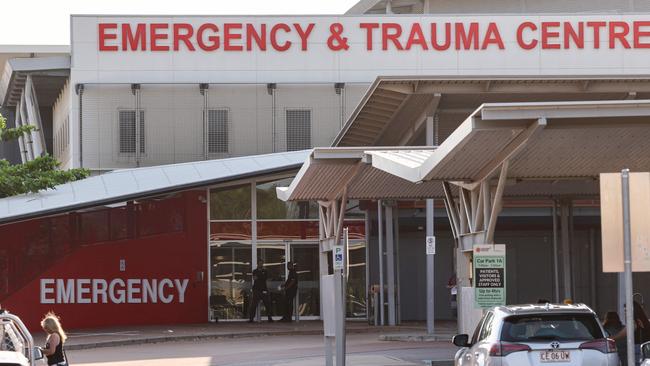
Northern Territory
Don't miss out on the headlines from Northern Territory. Followed categories will be added to My News.
Australia’s public hospital system is at “breaking point,” with emergency department wait times the highest they’ve been in a decade, and elective surgery waits the highest they’ve ever been, but in many ways, the Territory’s hospitals have proven surprisingly durable.
The Australian Medical Association released its 2024 Public Hospital Report Card on Friday, warning that after a “decade of declining performance... our hospitals are at breaking point”.
Across the nation, the median wait times for elective (planned) surgery have blown out to 49 days, an increase of 22 days on the 2003 figures, while the rates of emergency department presentations being seen within clinically recommended time frames have plummeted to their lowest in a decade.
Yet the figures, which are compiled from Australian Bureau of Statistics and Australian Institute of Health and Welfare data, show the Territory’s public hospitals have not been as badly affected by the precipitous decline of those in other jurisdictions.
AMA NT president Dr Robert Parker wrote in his preface to the Territory-specific pages of the report that the figures were “pleasantly surprising in some respects”.
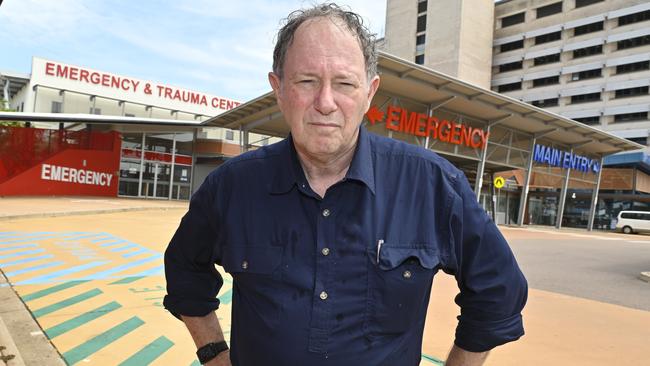
“The median time for elective surgery appears to be the best in Australia whilst the percentage of Category 2 elective surgery patients admitted within the recommended time [90 days] is equivalent to most other states and territories, although there has been a significant reduction in pre-Covid performance in this regard,” he wrote.
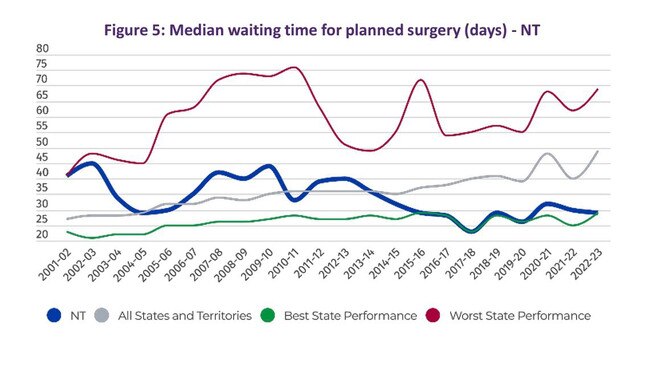
“It is also pleasing to see that the NT has improved its performance in respect to the percentage of emergency department visits completed within four hours.”
Dr Parker noted, however, Territory public hospitals remained under huge strain, as evidenced by a spate of recent Code Yellows – internal emergencies – being declared at Royal Darwin and Palmerston hospitals.
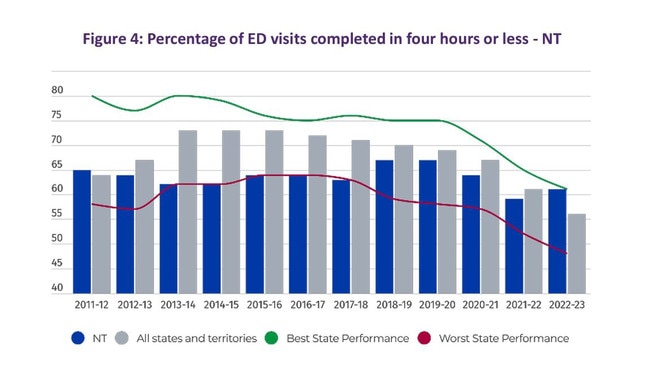
The Territory’s demography does offer some mitigation: emergency departments are typically twice as busy as those in other jurisdictions due to high burdens of chronic disease and a large Indigenous population, Dr Parker said.
According to the AMA report, more than 60 per cent of ED presentations in the Territory are concluded within four hours (either because the patient has been discharged or moved onto a ward).
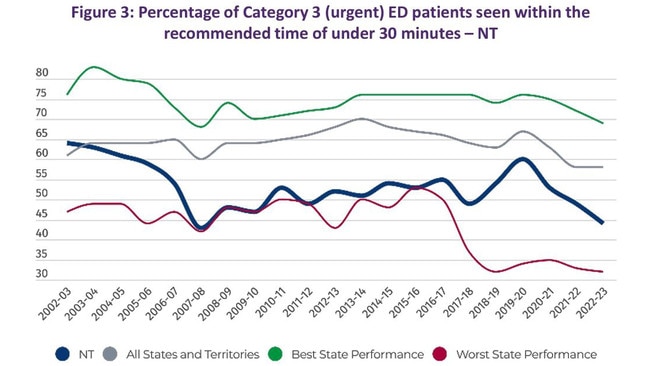
However, the ED only sees 44 per cent of its Category 3 patients (urgent but not life-threatening) within the clinically recommended 30 minute time frame.
The median wait time for elective surgery is 29 days, which is nation leading, although only slightly more than three-in-five Category 2 elective surgery patients go under the knife within the recommended 90 day time frame, down from greater than 90 per cent in 2017–18.
CLP health spokesman Bill Yan said the Territory’s public health system was being held back by chronically low staffing levels.
“If you look at just nursing, we’re over 400 nurses short across the Territory, and we’re struggling to attract people into the workforce,” he said.
He blamed the Territory’s out of control crime levels for turning away prospective workers.
Health Minister Selena Uibo said workforce attraction and retention remained a key priority.
She noted there was more than $150m worth of major infrastructure upgrades on foot, including a 24-bed mental health inpatient unit and a 32-bed multipurpose ward, both at the Royal Darwin, and a new ambulatory care centre with 48 dialysis chairs for Alice Springs Hospital.





